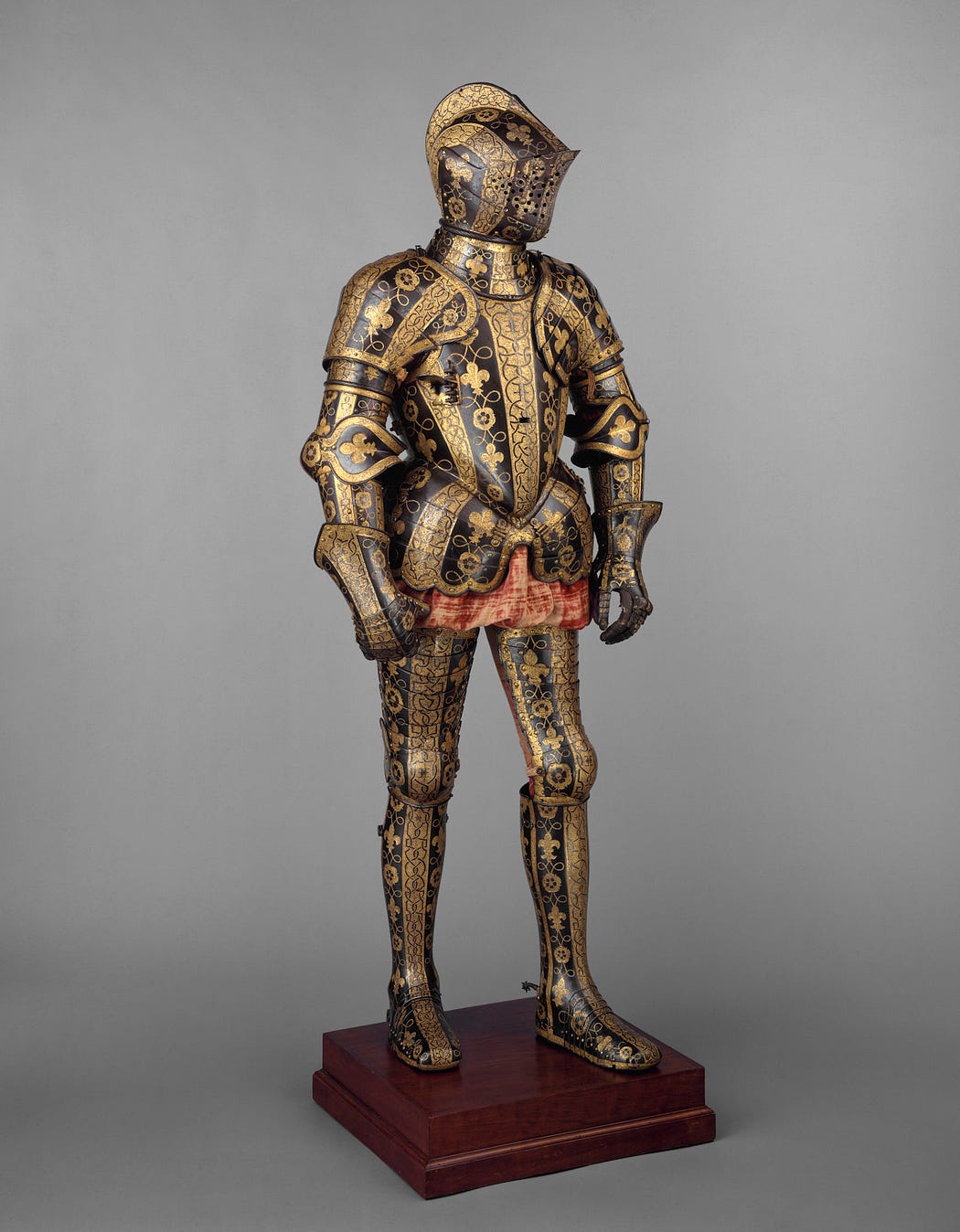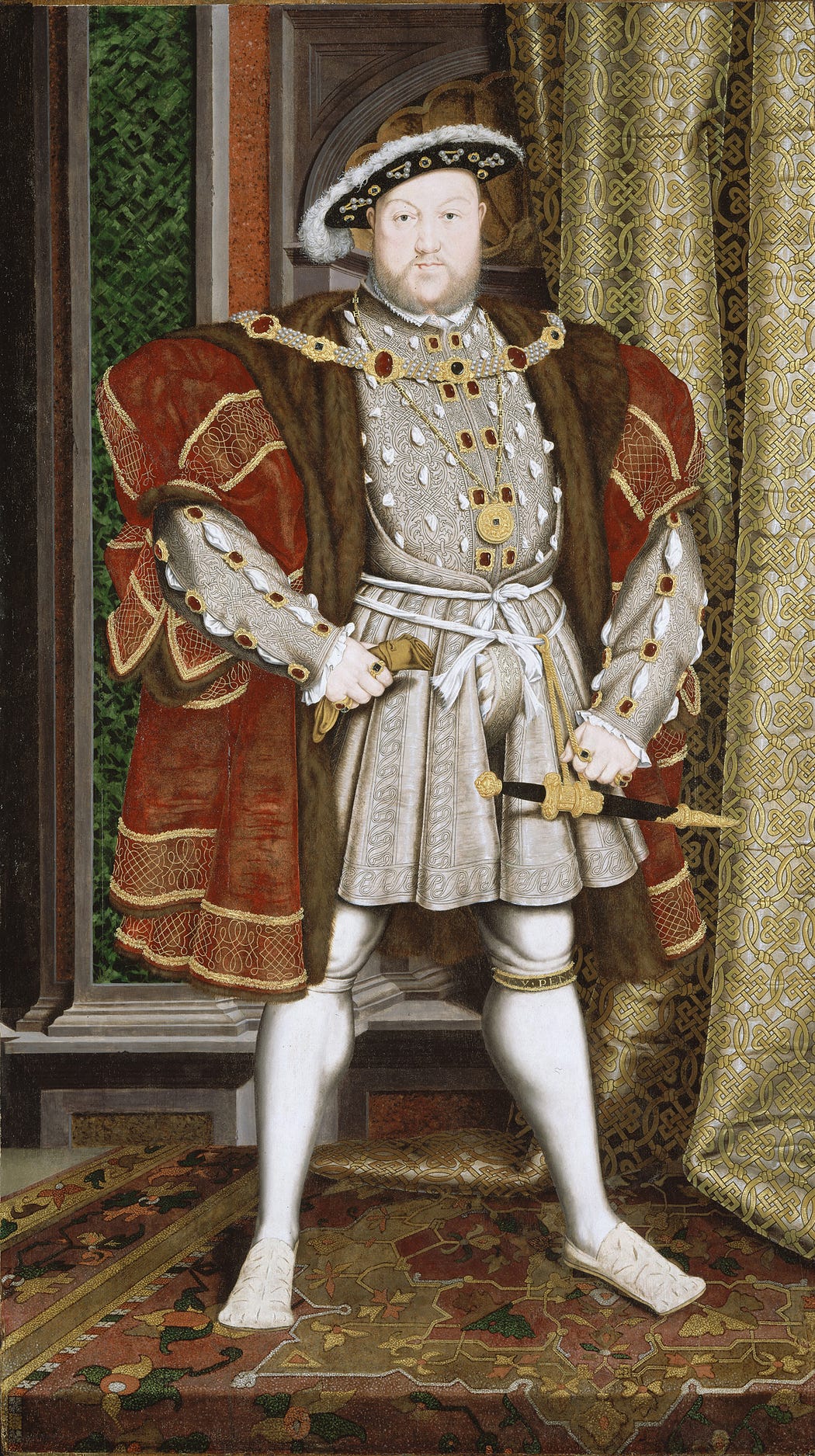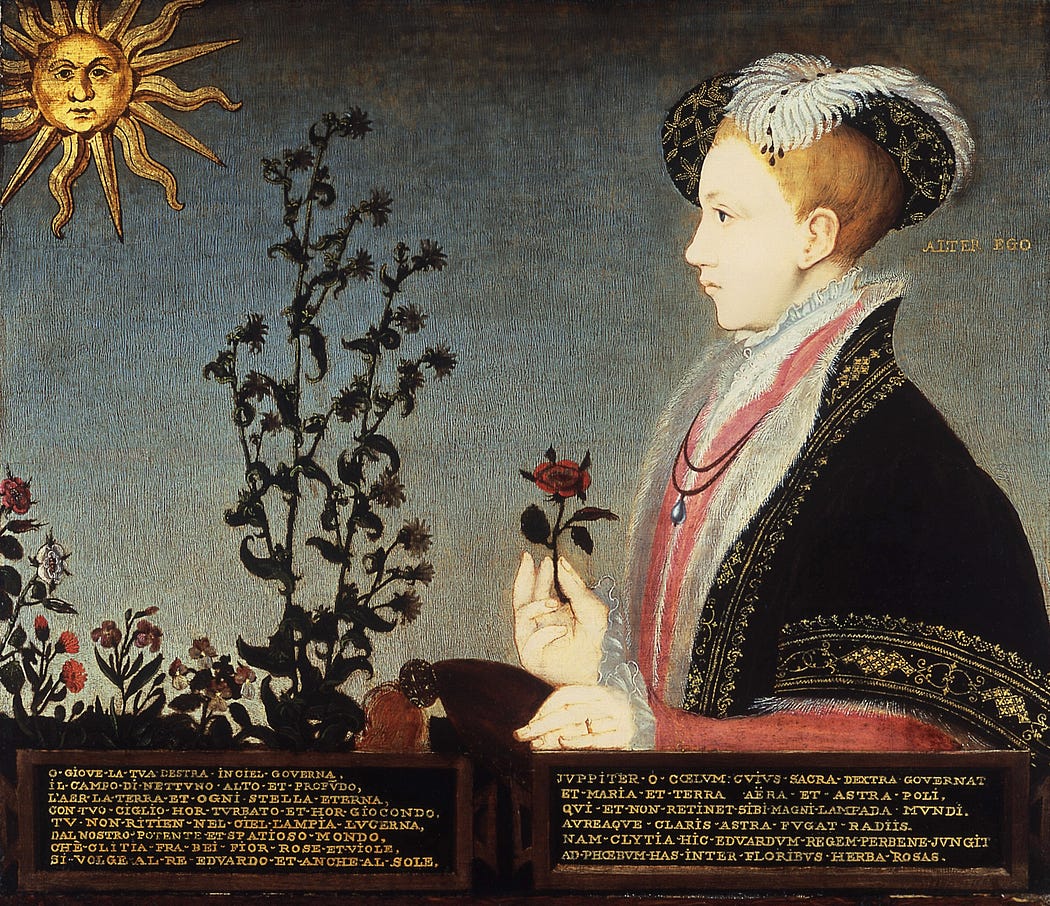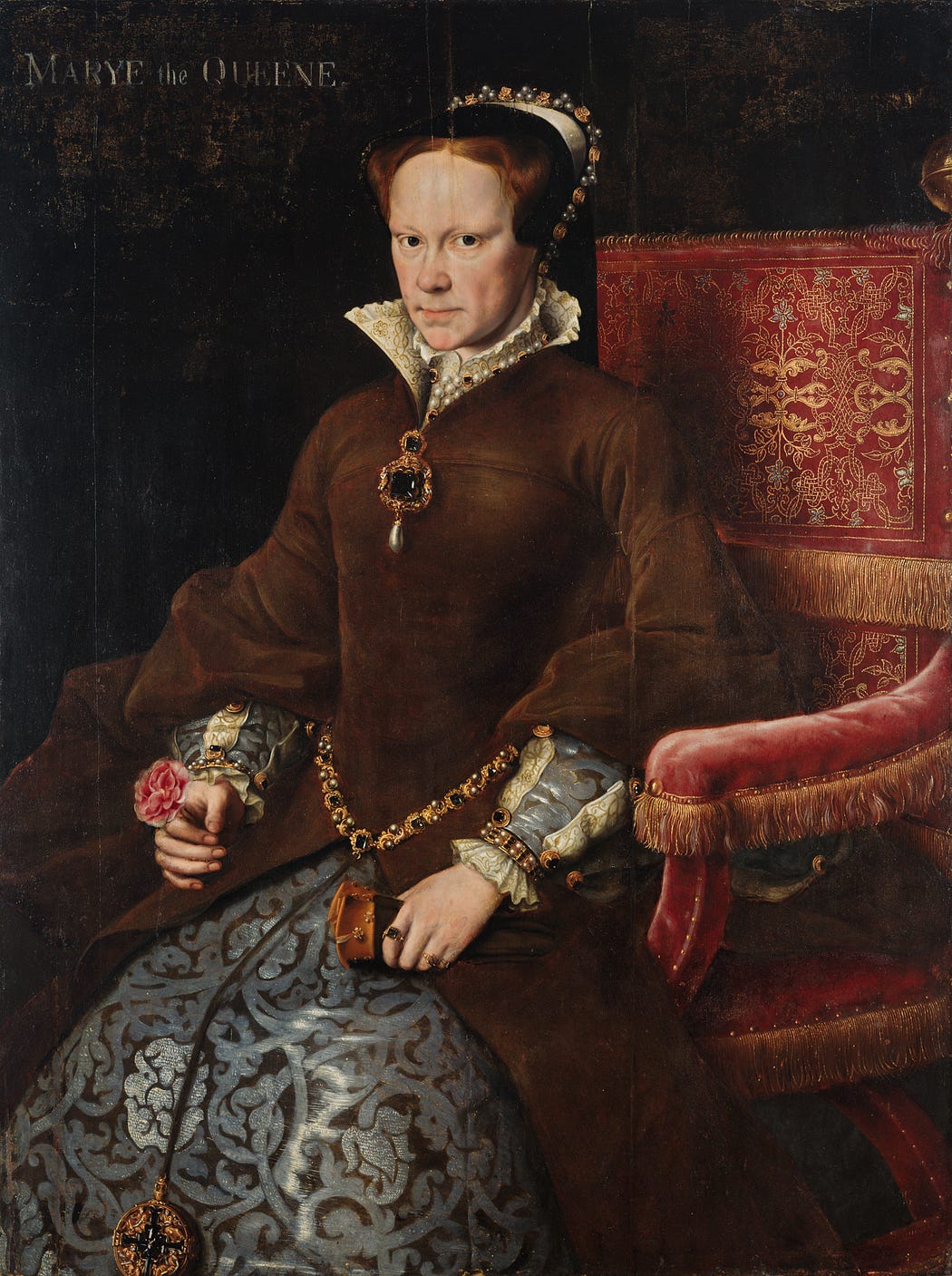Family Drama: Meet the Taste-Making Kings and Queens of the Powerful Tudor Dynasty in The Tudors: Art and Majesty in Renaissance England
- Blog Post
- Exhibitions

Figure 1. A Party in the Open Air, c. 1590–95. Isaac Oliver (French, c. 1565–1617). Watercolor and body color, with gold and silver, on vellum, laid on card; 11.3 x 17.4 cm. Statens Museum for Kunst, Copenhagen (KMS6938)
England was a thriving home for the arts during the volatile Tudor dynasty. Fueled by political intrigue, inspired by romantic and spiritual fervor, art created for the Tudor court was among the most sophisticated in the world during the period (fig. 1). The Tudors leveraged fine art to legitimize, promote, and maintain their reigns after Henry VII’s precarious seizure of the throne in 1485, which established the Tudor monarchy, through Henry VIII’s six tumultuous marriages and bid for authority over the church and its coffers, during Edward VI’s brief boyhood reign and Mary I’s legacy of sectarian violence, and concluding with the death in 1603 of the self-styled Virgin Queen Elizabeth I, the most powerful woman England had ever known. Three generations of Tudor monarchs navigated religious schisms against a backdrop of constantly shifting political relationships with mainland Europe. France was in turn courted, cajoled, and repelled by England, as the Tudors deployed symbol-laden works of art to impress the rival French king and communicate important political messages.

Tudor monarchs understood the diplomatic and propagandistic value of art and wielded cultural capital on an unprecedented scale. They depended on a web of agents extending far beyond England and even Europe to orchestrate lavish tapestry series, commission portraits that played key roles in marriage negotiations, and import luxury goods. A vast network of celebrated and highly skilled foreign artists, including many religious refugees, was key to enabling the Tudors to compete on an international scale and rival the courts of Europe. Florentine sculptors, German painters, Flemish weavers, and French wood-carvers contributed to a truly cosmopolitan court (fig. 2). At the same time, the Tudors nurtured local talent, and it was during this period that a distinctly English style emerged.
Vanity is timeless, but in Renaissance England, painted portraits had not yet achieved the status of luxury commissions ubiquitous among the wealthy. Instead, tapestry series with glittering gold threads and monumental scale impressed houseguests, and silver objects operated almost like currency in the courtly gift-giving network, binding service to reward. Portraits served a practical function, at once documentary and aspirational, so for kings and queens, they were de rigueur. For each Tudor monarch, much was at stake in the creation of an official image — a declaration of authority, legitimacy, taste, and, yes, appearance.


Henry VIII’s transformation from freshly minted to seasoned monarch is strikingly conveyed by two portraits. Painted around 1509 just after he acceded to the throne, the first portrait shows the young king’s elegance underscored by his delicate features and graceful gesture holding the Tudor rose (fig. 3). The portrait’s northern European style with its compressed space, fleur-de-lis arch, and one hand resting on a ledge harkens back to the previous century and the close artistic ties between England and the Netherlands. Three decades later, the king’s cult of manliness demanded a portrait featuring his exceptional stature (he was quite tall for the period, at six feet and two inches) and his military prowess (fig. 4). Hans Holbein the Younger was responsible for perhaps the most recognizable image of a Tudor monarch. The now iconic portrait shows Henry VIII swathed in cloth of silver and gold, weighted down with gold chains and jewels, and firmly rooted in a palace interior replete with rich textiles. The image of colossal Henry with arms akimbo endures in collective imagination partly due to the replication of official images of the monarch. These ranged from prints and coinage to copies of paintings hung in the galleries of wealthy courtiers anxious to display their allegiance to the crown.


The image of Edward VI, Henry VIII’s son and heir, as the future king was cultivated from babyhood (fig. 5). He was a sickly child, born to Henry’s third and favorite wife, Jane Seymour. Holbein’s wishful portrait shows Edward as much like his father as possible — the stout picture of health — and the Latin inscription at the base reinforces the continuity between father and son. A gift from the artist to Henry VIII, the painting was itself a luxury good incorporating powdered gold paint and silver leaf. A portrait painted some years later embraces a less derivative iconography, showing delicate Edward in profile (the style of ancient coins) with a flower nodding in deference toward the young king who would die only a few years later at the age of 15 (fig. 6).

Edward was succeeded by sisters who had a challenging balance to strike. Promoting their father’s legacy was critical to conferring legitimacy on their reigns, but relations between the king and his daughters had often been strained. Henry VIII had divorced Mary I’s mother, Katherine of Aragon, causing a break with the Roman Catholic Church, and he had condemned Elizabeth I’s mother, Anne Boleyn, to execution. As the first woman to rule England in her own right, Mary had to write her own playbook for queenliness (fig. 7). Mary’s early portraits forestall concerns about supposed feminine weakness and emphasize her sobriety and constancy. A staunch Catholic, Mary has a legacy of punitive violence, and her Spanish husband, Philip II, didn’t help make her any more likeable to English courtiers. However, in referencing earlier portraits by Titian and Raphael — artists much admired by her Hapsburg in-laws — Mary’s portrait by Antonis Mor was calculated to appeal on the continent more than in England, and multiple versions still exist. When Mary died without an heir after reigning for five years, the throne passed to her half sister, the Protestant Elizabeth, who cultivated her own carefully controlled portraiture with an unprecedented zeal.


By the time Elizabeth became queen, the Tudor monarchy had overcome the charges of illegitimacy that had plagued her grandfather Henry VII. The queen’s most iconic portraits celebrate her singularity. From Henry VIII’s cult of masculinity grew Elizabeth’s cult of virginity — the key to maintaining both her and the nation’s independence. In one of the earliest surviving portraits of Elizabeth as a princess, she holds a carnation between her fingertips — an allusion to her marriageability (fig. 8). Decades after she had rejected many suitors and refused to yoke England with another nation and its ambitions, The Rainbow Portrait presents the queen’s inviolable body resplendent with light. The disembodied eyes and ears that adorn her cloak evoke the culture of surveillance employed by Elizabeth to keep abreast of political and social intrigue (fig. 9).
The Tudors: Art and Majesty in Renaissance England builds on the rich holdings of the Metropolitan Museum of Art and brings together more than 90 loans from illustrious institutions including the British Royal Collection, Rijksmuseum, Folger Shakespeare Library, Victoria and Albert Museum, National Museum of Denmark, Isabella Stewart Gardner Museum, and Saint Bavo’s Cathedral, Ghent. The exhibition captures the breathtaking scope of the finest artistic production of the age, from intricately wrought armor, rare furnishings, and glittering tapestries woven with gold to precious illuminated manuscripts. These are brought to life by dozens of portraits in which Tudor monarchs tell you who they are. They are joined by portraits of the courtiers, servants, and visiting diplomats who carved out space for themselves in the orbit around these monarchs who were nothing without their subjects. Visit the exhibition in the Kelvin and Eleanor Smith Foundation Exhibition Hall through May 14, 2023.
This blog was derived from articles previously published in the museum’s magazine Cleveland Art. To read more articles on exhibitions and the collection, become a member to receive the quarterly magazine and a host of other benefits.
Sponsors
The Tudors: Art and Majesty in Renaissance England is made possible with support from Viia R. Beechler, Carl M. Jenks, Patty and Rodger Kowall, and Robert and TuYa Shwab.
This exhibition is supported by an indemnity from the Federal Council on the Arts and the Humanities.
All exhibitions at the Cleveland Museum of Art are underwritten by the CMA Fund for Exhibitions. Principal annual support is provided by Michael Frank and the late Pat Snyder and by the late Roy L. Williams. Major annual support is provided by the Womens Council of the Cleveland Museum of Art. Generous annual support is provided by an anonymous supporter, the late Dick Blum and Harriet Warm, Gary and Katy Brahler, Cynthia and Dale Brogan, Dr. Ben and Julia Brouhard, Brenda and Marshall Brown, Mr. and Mrs. Walter R. Chapman Jr., Richard and Dian Disantis, the Jeffery Wallace Ellis Trust in memory of Lloyd H. Ellis Jr., Leigh and Andy Fabens, Janice Hammond and Edward Hemmelgarn, Carl T. Jagatich, Cathy Lincoln, Eva and Rudolf Linnebach, William S. and Margaret F. Lipscomb, Bill and Joyce Litzler, Carl and Lu Anne Morrison, Tim O’Brien and Breck Platner, William J. and Katherine T. O’Neill, Henry Ott-Hansen, Michael and Cindy Resch, the Kelvin and Eleanor Smith Foundation, Margaret and Loyal Wilson, and Claudia C. Woods and David A. Osage.